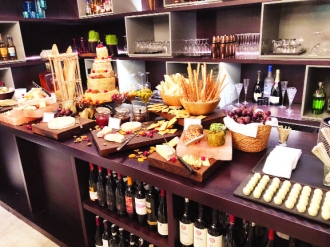Cheese making is still a relatively regional phenomenon, and are limited by climate, geography, and equipment. It is not just a faint of heart, it also requires both passion and patience equally. The reporter Asmita Sarkar finds out how one of the top innovators in the U.K. who is mastering artisan cheese making and going forward.
A soft, gooey centre emerged when we used a butter knife to cut through the slightly hard rind of the Brie cheese. The almost-smoky taste stuck to our mouth when eaten alone but paired with a red wine to mask the strong flavour, it quickly became apparent that this was a match made in heaven. The lingering aftertaste was strangely satisfying. You didn’t feel like mindlessly spooning out spoonfuls over casual conversations. And this was not shop-shelf, processed or imported. It was, in fact, made in small storage units for as little a time of maturing as three years.
India is still some way off till artisanal cheese-making becomes a mainstream occupation but in the United Kingdom and Europe, where the trend has picked up already, crafted cheese is innovating the menu.
For the independent cheesemakers, the size of their unit is the deciding factor behind the age of the cheese, since storing milk on the shelf for years requires space that may not be available in urban spaces. So, cheese-makers are focussing on younger and smaller cheeses that are easier to store and sell faster.
According to Himanshu Sharma, a cheese-maker whose unit is in Rajasthan and who claims to have India’s first cheese cave, the pursuit will become a trend in India soon. Right now there are a few experimental makers in Maharashtra, Tamil Nadu, the Himalayan states and Rajasthan.
“In Britain and Europe, there is a tradition of making harder, older cheeses. We decided to look at a range of younger, smaller cheeses because of the size of the property we have in Tottenham, London,” said Philip and Keith, the co-founders of Wildes Cheese, who are bringing their varietal to India. They don’t consider themselves experts in cheese but believe that their passion is what drove them forward in this profession. Even as artisans, they hope to make cheese that most ordinary bite people would like.
“We went to a food market to give people samples of our blue cheese and most people told us that they don’t like it. The reason you get blue cheese is because of the strain of penicillin. To make it blue, you have to pierce holes through the cheese. The air goes inside and reacts with the chemicals to make it strong and blue. So, we innovated. We made the Baby Blue by putting the mould inside without any holes,” they said.
They started their cheesemaking business in 2012 in urban London and sourced their milk locally. The rapid turnover means their products will soon be available at the Hyatt Regency as well, which is planning India’s first in-house cheese-making unit.
Generally, the traditional blue cheese is shunned for its pungent nature but the innovated Baby Blue, aged for three years that they brought from London, is anything but that. Soft inside with a slightly hard rind, it goes well with a red wine, which was Chef Ivan Chieregatti’s recommendation for us. He also used the blue cheese in a praline with white chocolate. To call it interesting is only the beginning. It was an entirely new experience of eating chocolate for us since unlike our expectation of a sweet centre it had a faint saltiness and a creamy, milky texture.
The Baby Blue can be consumed within seven days. The flavour, however, would change week to week if one keeps it longer than seven days, the artisans said.
One of the other cheeses they brought, the Lordship, spiced with garlic and herbs, was meant for consumption the same day. It is a fresh cow’s milk cheese made with vegetarian rennet, which is an ethical process for making cheese, according to the co-founders.
With smaller cheese-makers catching up on their secrets, it will be possible for many Indians to cater to customers’ tastes and choices. For example, we are already experimenting with non-processed vegan cheeses.
While coming up with ideas for their innovations, cheesemakers borrow from traditions and improve upon it for the palate of the new age turophile.
“You may know about Brie or Camembert. You change slight things and make your own version. When you make cheese it’s a simple process.
You heat milk up to a certain temperature, put the culture in, which comprises bacteria and enzymes, and depending on the temperature you take that to, you get a reaction from the bacteria that gives a flavour and texture. It’s about experimentation,” said Keith, 57.
The cheesemakers shied away from claiming any one of cheeses on display as their favourite or recommending any wine with it, but the tradition of pairing wine and cheese has been a long established because of mouthfeel.
“It is important to pair wines that are mild if the focus is to be on the cheese. There are studies about wines and food pairing but on a certain level it is a very personal choice. Many people say that red wine doesn’t go with fish but if you have flavour in it red wine would be a good combination. For me, the best form is to have bread and cheese,” said Chieregatti, executive chef at Hyatt Regency, and an Italian.
Writer: Asmita Sarkar
Courtesy: The Pioneer








 OpinionExpress.In
OpinionExpress.In















Comments (0)